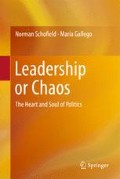Abstract
To model coalition behavior after an election, we assume that each party chooses a preferred position (or ideal point) in a policy spaceX. As before, the parties are P = { 1, …, j, …, p}, and the vector of party ideal points is z = (z 1, …, z p ). After the election we denote the number of seats controlled by party, j, by s j and let s = (s 1, …, s p ) be the of the vector of parliamentary seats.
Access this chapter
Tax calculation will be finalised at checkout
Purchases are for personal use only
Notes
- 1.
The estimations presented below are based on factor analysis of sample surveys conducted by Veri Arastima for TUSES.
- 2.
The party positions were estimated using expert analysis, in the same way as the work by Benoit and Laver (2006).
- 3.
- 4.
Since the Bayes’ factor (Kass and Raftery 1995) for a comparison of two models is simply the ratio of marginal likelihoods, the log Bayes’ factor is the difference in log likelihoods.
- 5.
The log Bayes factors for the joint models over the sociodemographic models were highly significant at + 31 in 1999 and + 58 in 2002. The Bayes’ factors for the joint over the spatial models were also significant, and estimated to be + 6 and + 5 in 1999 and 2002, respectively.
- 6.
Sociodemographic models are standard in the empirical voting literature.
- 7.
These tables show the standard errors of the coefficients, as well as the t-values, the ratios of the estimated coefficient to the standard error.
- 8.
Although Erdogan was the party leader, Abdullah Gul became Prime Minister after the November 2002 election because Erdogan was banned from holding office. Erdogan took over as Prime Minister after winning a by-election in March 2003.
- 9.
The 95% confidence interval for β1999 is [0.2,0.55] and for β2002 it is [1.28,1.76].
- 10.
The Bayes factors, or differences between the log marginal likelihoods of the joint models over the pure spatial models were + 5 in both years.
- 11.
The Herfindahl concentration measure of the vote shares went from 0. 11 in 1999 to 0. 16 in 2002 to 0. 27 in 2007.
- 12.
Asli Aydintasbas in the New York Times, April 7, 2009.
- 13.
Notice that the electoral model for Israel, presented in Sect. 10.1 is very similar to that of Turkey, with two electoral axes, religion and security. In Chap. 9 we found “nationalism” to be one of the principal axes in Russia. However, the second axis for the Russian model was defined by attitudes to capitalism/communism. Perhaps this axis for Russia is analogous to the axes involving religion in Israel and Turkey.
- 14.
As in Chap. 3, fragmentation can be identified with the effective number (Laakso and Taagepera 1979). That is, let H v (the Herfindahl index) be the sum of the squares of the relative vote shares and env \(= {H}_{v}^{-1}\) be the effectivenumber of party vote strength. In the same way we can define ens as the effective number of party seat strength using shares of seats.
- 15.
Schofield and Sened (2006) modeled the elections in the United Kingdom for 1992 and 1997 and found convergence coefficients in the range [1.0,2.0]. The env for these elections increased slightly from 3.1 in 1992 to 3.2 in 1997, while the ens decreased slightly from 2.3 to 2.2, reflecting the size of the Labor victory in 1997.
- 16.
See Gandhi and Vreeland (2004), Epstein et al. (2006), Vreeland (2008), Fjelde (2010) and Regan and Bell (2010).
Author information
Authors and Affiliations
Corresponding author
Rights and permissions
Copyright information
© 2011 Springer-Verlag Berlin Heidelberg
About this chapter
Cite this chapter
Schofield, N., Gallego, M. (2011). Elections in Israel and Turkey. In: Leadership or Chaos. Springer, Berlin, Heidelberg. https://doi.org/10.1007/978-3-642-19516-7_10
Download citation
DOI: https://doi.org/10.1007/978-3-642-19516-7_10
Published:
Publisher Name: Springer, Berlin, Heidelberg
Print ISBN: 978-3-642-19515-0
Online ISBN: 978-3-642-19516-7
eBook Packages: Humanities, Social Sciences and LawPolitical Science and International Studies (R0)

